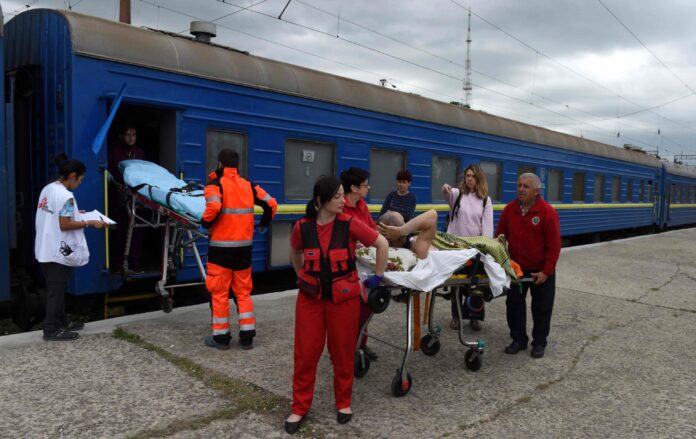On the Donbas front, fighting is like in an old conflict, with trenches and artillery. The clashes have been documented in several videos. However, what happens in the rear, between coups and distorted news, is less visible and verifiable.
Two days ago, Ukrainian sources revealed a defiant gesture a few days ago: the sabotage of a Russian armored train in the city of Melitopol. With this they managed to damage several wagons, including those intended for transporting troops. However, a second version of this information spoke of a deflagration near the train tracks.
The episode, leaving aside the actual consequences of the attack, is just one chapter in a long story. The Russian army uses special railway convoys made up of armored cars and equipped with machine guns. They have locomotives that tow platforms loaded with war material, fuel drums or vehicles. Moscow has at least two of these “beasts of war”, Baykal and Amur, already proven in previous conflicts, among which is the crisis in Crimea. And now they have been taken out of the deposit again as a support.
Raids are also taking place behind railway tracks. In Melitopol a Russian army officer was killed in an ambush attributed to the Ukrainian resistance that took place during the night. The resistance must make Russia’s attempts to impose its administrative power in the occupied provinces fragile. These attacks are usually entrusted to small teams, to people who have decided to stay “back” and know their land well. They use simple weapons, grenades or explosives and, in some cases, it is suspected that they may have had direct or indirect support from the West. Because the intelligence services can capture communications and identify targets, but also infiltrate men. Everything is possible, from denial to lies. Ukrainians have traditionally shown that they can do it on their own, but if they have help, all the better for them.
This activity has long since spread to Belarus, the starting point of the invasion. The railway continues to be the target of local opponents, who cause damage to the tracks or stations. Sometimes they are rudimentary and low-cost operations for those who carry them out, but they have heavy consequences on the transport chain. The reaction of the Lukashenko regime confirms this: the Minsk authorities have detained at least 60 people, in some cases violently. In fact, on May 4, a harsh law was passed in Parliament that extended the death penalty to those guilty of “attempted terrorism.” This very severe penalty testifies to how much there is fear of internal threats within the country.
The Ukrainians together with the spear take the shield. Their adversaries, the Russian army, already during the first days of the war, mobilized their teams of “destroyers”. Commandos, military intelligence agents and the fifth department of the FSB (Federal Security Service of Russia) as well as pro-Russian collaborators. Some were already inside the country and aimed to “shepherd the ground” and pave the way for others by causing damage, attacking the country’s communication networks and infrastructure, but also carrying out assassinations or what the KGB calls “wet jobs.” “.
For this reason, kyiv created a special unit with more than 1,000 soldiers in charge of persecuting infiltrators. According to government sources, some 90 cells have been neutralized with a total of 757 arrests. But this mission has only just begun. The conflict is destined to drag on, the movements of tanks and artillery are accompanied by incursions by agile groups. Among other things because Putin has given more responsibility to the new top officer of the Russian army, Vladimir Alekseyev, a specialist in covert operations and a veteran of Ukraine.
Conforms to The Trust Project criteria








